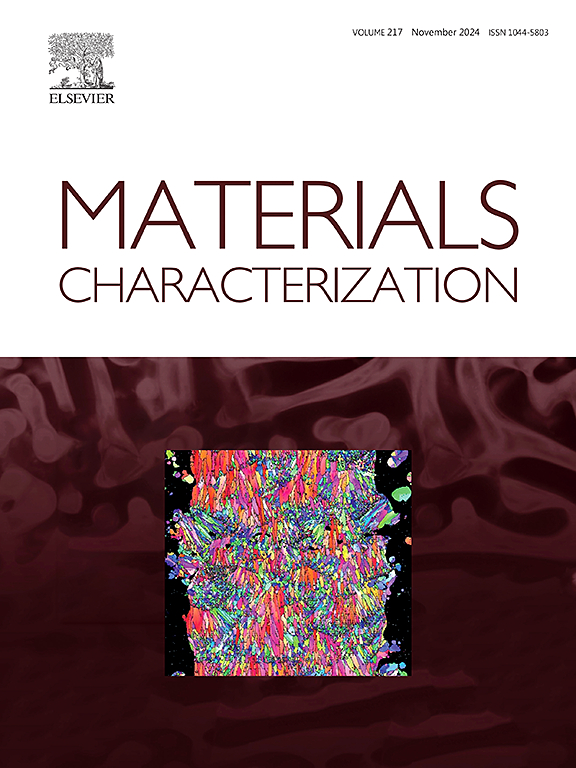Effect of overlap percentage on morphology, microstructure, and mechanical properties during multilayer multi-pass friction rolling additive manufacturing
IF 4.8
2区 材料科学
Q1 MATERIALS SCIENCE, CHARACTERIZATION & TESTING
引用次数: 0
Abstract
Solid-state metal additive manufacturing technology leads to efficient and rapid production of large, complex metal components. Friction Rolling Additive Manufacturing (FRAM) has successfully overcome the limitations of the width of formed parts and facilitates the manufacture high-performance large metal components. However, research on deposition strategies for thick-section-formed parts is yet to be conducted. This study reports the successful fabrication of multilayer multi-pass samples with different overlap percentages (OPs) (0 %, 12.5 %, 25 %, 37.5 %, 50 %, 62.5 %, and 75 %) and the effects of OP on sample morphology, microstructure, and mechanical properties. The results indicate that with gradually increasing OP, the effective deposition width narrows, mixing degree of plasticized material in overlap zone (OZ) improves, and forming morphology of samples progressively deteriorates. The height of OZ increases from 0.7 mm to 2.4 mm, with a maximum height difference of approximately 0.85 mm between the OZs and non-OZs. The height and slope of the grooves at the edges of the OZ gradually decrease. Simultaneously, the as-deposited (AD) 25 % OZ was observed to have small and uniform grains with sizes of about 5.82–7.44 μm. The grain size and LAGBs of the post-deposited heat-treated (PDHT) OZ center increased to 8.4 μm and 52 %, respectively. The mechanical properties of the AD and the PDHT of the 25 % overlap sample were optimal. The maximum tensile strength and elongation of the PDHT-25 % overlap sample in the Y- and Z-direction were 265 MPa, 15.8 %, and 242.3 MPa, 14.8 %, respectively. Thus, 25 % OP (OZ width of 3 mm) effectively balances the morphology, efficiency, and performance of the sample, providing an optimal multilayer, multi-pass deposition strategy for the future deposition of thick sections of large, complex metal components using FRAM.
求助全文
约1分钟内获得全文
求助全文
来源期刊

Materials Characterization
工程技术-材料科学:表征与测试
CiteScore
7.60
自引率
8.50%
发文量
746
审稿时长
36 days
期刊介绍:
Materials Characterization features original articles and state-of-the-art reviews on theoretical and practical aspects of the structure and behaviour of materials.
The Journal focuses on all characterization techniques, including all forms of microscopy (light, electron, acoustic, etc.,) and analysis (especially microanalysis and surface analytical techniques). Developments in both this wide range of techniques and their application to the quantification of the microstructure of materials are essential facets of the Journal.
The Journal provides the Materials Scientist/Engineer with up-to-date information on many types of materials with an underlying theme of explaining the behavior of materials using novel approaches. Materials covered by the journal include:
Metals & Alloys
Ceramics
Nanomaterials
Biomedical materials
Optical materials
Composites
Natural Materials.
 求助内容:
求助内容: 应助结果提醒方式:
应助结果提醒方式:


